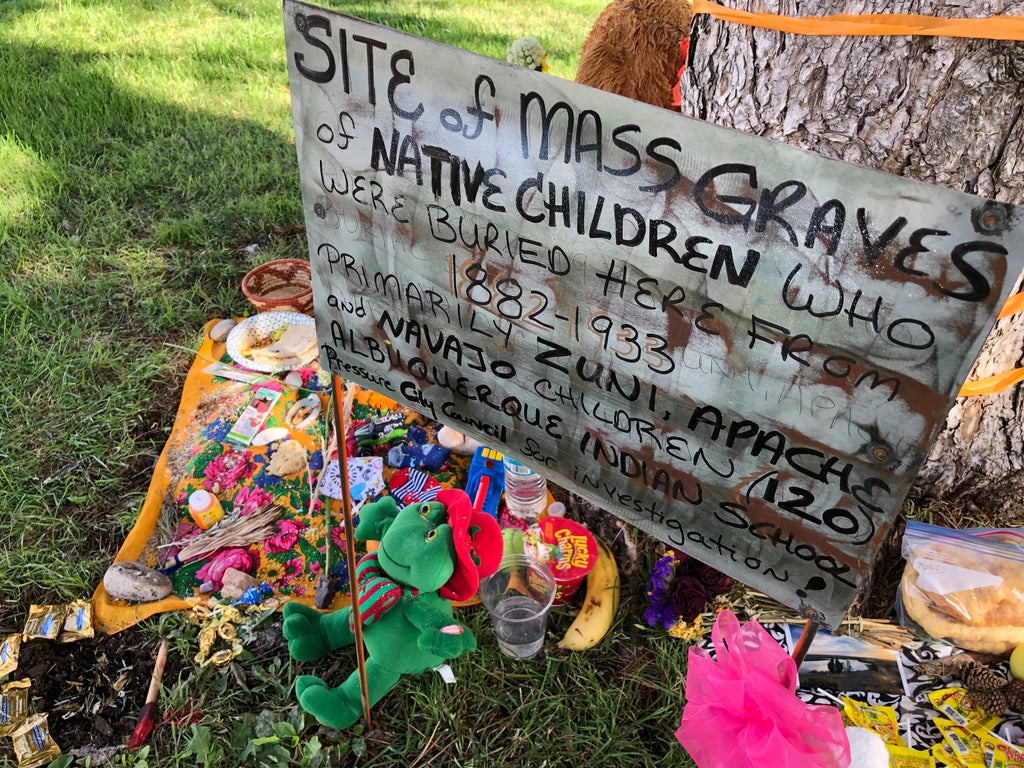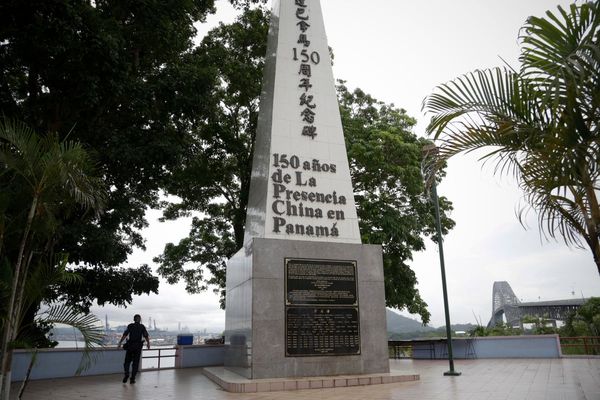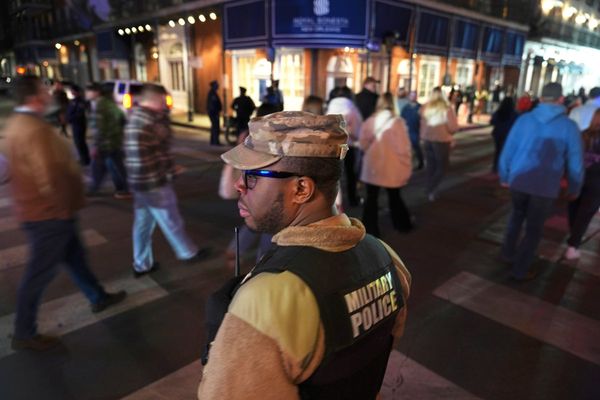
EDITORS/NEWS DIRECTORS:
The U.S. government supported hundreds of boarding schools over 150 years that were aimed at stripping Native Americans of their languages, cultures and traditions, and assimilating them into white society.
A report released this month by the U.S. Interior Department put the number at 408, starting in the late 19th century through the late 1960s. At least 500 Native children died at the boarding schools and were buried at them, some in unmarked graves. The number of burial sites identified so far is 53.
The numbers are expected to grow as the Interior Department continues its investigation, building on an early inventory produced by the National Native American Boarding School Healing Coalition and other researchers. The number of children who died from accidental injuries, illness and abuse could reach into the tens of thousands, the Interior Department said.
Meanwhile, Congress is considering a bill to create a truth and healing commission, similar to one established in Canada in 2008. It would have a broader scope than the Interior Department's investigation into federally run boarding schools and subpoena power, if passed.
Here are some contextual details — and potential questions — you can use in your own reporting on Native American boarding schools to run alongside AP stories, or to stand alone.
BOARDING SCHOOLS BACKGROUND
Starting with the Indian Civilization Act of 1819, the U.S. enacted laws and policies to establish and support Native American boarding schools. The U.S. government often worked hand-in-hand with religious institutions to civilize and convert Native Americans to Christianity.
Parents often were coerced into sending their children to boarding schools. Some survivors have reported their parents were threatened with imprisonment, told that welfare assistance would be withheld or their children would be taken away if they refused to send them to boarding school.
Children were subjected to manual labor as part of boarding school curricula. They were prohibited from speaking the only languages they knew, had their long hair — sacred in many Indigenous communities — cut, their names changed and were separated by gender.
Many children suffered emotional, spiritual and physical abuse at the schools that included whipping, slapping and being handcuffed when they didn't follow the rules, according to the Interior's investigation.
At times, children intentionally were sent to boarding schools far from home to disrupt families and Indigenous communities, the report said. One example was the Carlisle Indian School in Carlisle, Pennsylvania, which had children from more than 100 tribes.
Congress appropriated money to run the schools, but the federal government also used money held in trust for tribes as compensation for land that tribes ceded.
LASTING EFFECTS
The Interior report cited studies that found boarding school policies impacted several generations of Indigenous families, also known as intergenerational trauma.
Survivors of boarding schools who became parents often were afraid to teach their children their Native languages for fear they, too, would be punished. Federal policies contributed to the diminishment of Native languages and cultures, poor physical and mental health, and strained and broken family ties.
The Interior's assistant secretary for Indian Affairs, Bryan Newland, has recommended more work be done to determine the health and mortality of Indigenous children who attended boarding schools.
Interior Secretary Deb Haaland has planned a yearlong tour to gather stories of boarding school survivors for an oral history collection. The agency also has proposed a federal memorial to the survivors.
Until now, the federal government has not been willing to investigate its role in the schools. The ongoing task has been monumental.
LOCALIZING THE STORY:
The Interior Department's report includes a list of the boarding schools in what were states or territories that operated between 1819 and 1969 that had a housing component and received support from the U.S. government.
Oklahoma had the highest number at 76, followed by Arizona with 47 and New Mexico with 43. All three states still have significant Native American populations. Alaska Native and Native Hawaiian children also were forced into boarding schools.
The federal government today oversees more than 180 schools in nearly two dozen states that serve Native Americans, but the schools’ missions are vastly different from the past. The U.S. Bureau of Indian Education directly operates some, including Haskell Indian Nations University in Kansas where more than 100 students from its boarding school days are buried. Tribes or tribal organizations operate other schools under contract with the federal government.
The National Native American Boarding School Healing Coalition has identified 497 boarding schools. They include privately run institutions and those operated by churches or religious organizations that didn't meet the Interior's criteria for inclusion on its own list.
The Interior Department identified more than 1,000 other federal and non-federal institutions outside the scope of its investigation that include day schools, sanitariums, asylums, orphanages and stand-alone dormitories that also could have educated Indigenous people.
QUESTIONS TO ASK:
— What boarding schools operated in your area? Which children were sent to those schools? Are there survivors who would be willing to share their stories?
— Are those schools still open? What function do they serve now? How has the mission of the schools changed?
— What do public and private schools in your area teach about the boarding school era and the federal government's role in establishing and supporting them?
— How have local religious organizations responded to their role in Native American boarding schools?
— What does healing look like for Native American tribes, Alaska Native villages or Native Hawaiian communities near you? How are the communities working to bring children who died and were buried at boarding schools home?
— What has been done to protect and memorialize known burial sites?
— What is the capacity of the local health care systems to handle any needs that might arise as boarding school survivors and tribal communities are encouraged to share their stories and experiences?
— How did historical figures in your area shape the boarding school system?
— How did tribes and individual tribal members escape the boarding school system and what might have been the result?
— Are there local museums with exhibits on the boarding school era? How do visitors who are unfamiliar with the schools engage with and react to what they see?
RESOURCES:
Federal Indian Boarding School Initiative Investigative Report: https://www.bia.gov/sites/default/files/dup/inline-files/bsi_investigative_report_may_2022_508.pdf
List of federal boarding schools: https://www.bia.gov/sites/default/files/dup/inline-files/appendix_a_b_school_listing_profiles_508.pdf Maps of federal boarding schools: https://www.bia.gov/sites/default/files/dup/inline-files/appendix_c_school_maps_508.pdf
National Native American Boarding School Healing Coalition: https://boardingschoolhealing.org/ Native American Rights Fund: https://www.narf.org/cases/boarding-school-healing/







